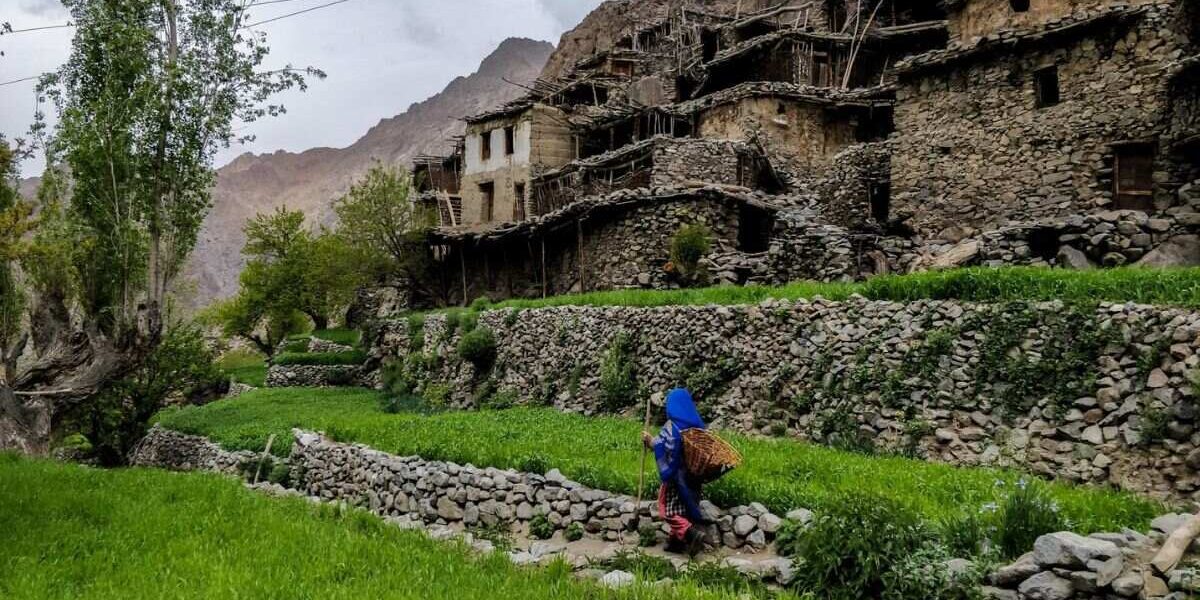Hunderman: The Ghost Village and Its Museum of Memories
Nestled about 10 kilometers uphill from Kargil town lies the quaint village of Hunderman—a place of profound historical significance and poignant memories. Often hailed as the last village within Indian territory near the Indo-Pak border, Hunderman has been a silent witness to the turbulence of geopolitical conflicts.
A Village Marked by Conflict
Hunderman’s history is deeply intertwined with the saga of border disputes. This seemingly unremarkable village has been through the crucible of four wars and has been a focal point in the larger struggle between two nations. From 1949 to 1965, Hunderman was under Pakistani control. The India-Pakistan war of 1965 saw it fall into the dangerous limbo of no-man’s land for several months, only to be reabsorbed into Pakistan until 1971. It was then that India reclaimed Hunderman, leading to a dramatic shift in the village’s status and its people’s lives.
The Heartbreaking Tale of Displacement
The shift of Hunderman into Indian territory had a profound impact on its inhabitants. Families were split as members found themselves on either side of the newly drawn border. Husbands and wives were separated, brothers lost touch, and people found themselves as refugees in their own land. The village’s trauma didn’t end there; it also suffered during the Kargil Conflict in 1999, further intensifying the village’s historical burden.

A Story of Resilience and Heritage
Hunderman’s story is one of resilience amidst shifting borders. The village reflects the broader tragedy of the partition of India and Pakistan in 1947—a partition that uprooted countless lives and communities. The tale of Hunderman is a microcosm of this larger historical upheaval, marked by family separations and displacement. Speaking to those who experienced these upheavals firsthand is an emotional journey, offering a surreal glimpse into lives forever altered by political decisions.
From Brok to Hunderman
The Hunderman of today is not the same as its historical predecessor. The original village, established around four centuries ago, was located at a lower elevation and thrived due to its fertile land and abundant water supply, nestled within the towering Himalayas. Known as Brok—a term in the Balti language meaning a summer haven for cattle grazing—the area was a vital part of the Silk Route.
Post-independence, the Radcliffe Line that partitioned India and Pakistan traversed through these regions. Between 1949 and 1965, Hunderman was part of Pakistan. The aftermath of the 1965 war left the village in limbo until it was reincorporated into Pakistan once more. It was only in 1971, during the conflict for Bangladesh’s liberation, that the Indian army captured Hunderman, making it a part of India.
The Legacy of Major Mansingh
The renaming of Hunderman is a testament to the village’s enduring spirit. Originally called Hundermo, the village’s name was changed to Hunderman as a tribute to Major Mansingh of the Gorkha Regiment, who was the first Indian soldier to arrive in the village during the 1971 conflict. His kind words and the distribution of much-needed rations brought hope to the villagers. In honor of his compassion, the name Hundermo was transformed into Hunderman, symbolizing the village’s transition and the lasting impact of the war.
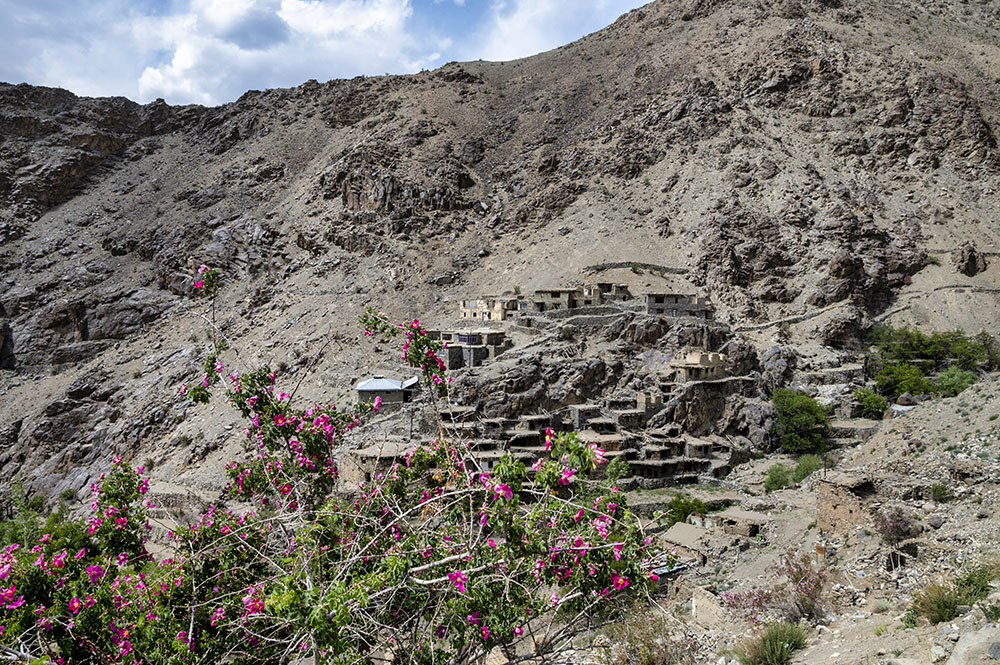
Discover Hunderman
Visiting Hunderman is like stepping into a living museum, where every corner holds a piece of the past. The Museum of Memories in the village offers a poignant reflection on its history and the trials faced by its people. For those interested in the intersection of history and personal stories, Hunderman provides an unforgettable experience, blending the stark realities of conflict with the enduring spirit of its people.
The Enigmatic Lives of Hunderman: Stories from a Borderland Village
In the heart of Hunderman, a village caught between two nations, lie stories of profound change and heartache. The Indian Army’s capture of Hunderman in 1971 reshaped the lives of its residents overnight. Those who fled to Pakistan left behind their homes, while those who remained found themselves suddenly labeled as Indian citizens. This abrupt transition led to a myriad of personal dramas and historical ironies.
The Pained Echoes of Separation
Among the poignant tales we encountered was that of an elderly villager who once attended school in Brolmo, now a part of Pakistan. After the border shifted, his school and friends became distant memories. In some cases, families were split, with members stranded on opposite sides of the new border. Couples, torn apart by geography, were forced to dissolve their marriages through letters—a reality that seems almost surreal.
Another heartrending story came from a woman who had not seen her elder brother for fifty years due to the border’s upheaval. Meanwhile, a retired Pakistani army officer faced bureaucratic obstacles in claiming his pension from the Indian authorities. Ironically, a school once built by the Pakistani government was inaugurated under Indian administration. Such narratives, filled with personal loss and bureaucratic absurdity, illustrate the village’s unique and often sorrowful history. Yet, amidst these trials, the villagers cling to hope, dreaming of a reunion with their loved ones across the border.
Discovering Hunderman: An Untouched Gem Near Kargil
While Kargil often serves as a transit point for travelers journeying between Srinagar and Leh, it holds hidden treasures for those willing to explore beyond its bustling streets. The town’s charm is accentuated by the Suru River, which weaves through the center of Kargil, and the surrounding landscapes offer breathtaking beauty. This time, our exploration led us to Hunderman, a village that epitomizes the unspoiled allure of Kargil.
Our visit to Hunderman was part of a broader adventure that included a trek from Zanskar Valley. After exploring Suru Valley, we decided to venture to Hunderman, intrigued by its historical and scenic appeal. The drive from Kargil to Hunderman, about 10 kilometers uphill, offered a peaceful escape from the town’s hustle. As we navigated the winding road, the towering mountains around us provided a serene backdrop, blurring the lines of the political borders etched across the landscape.
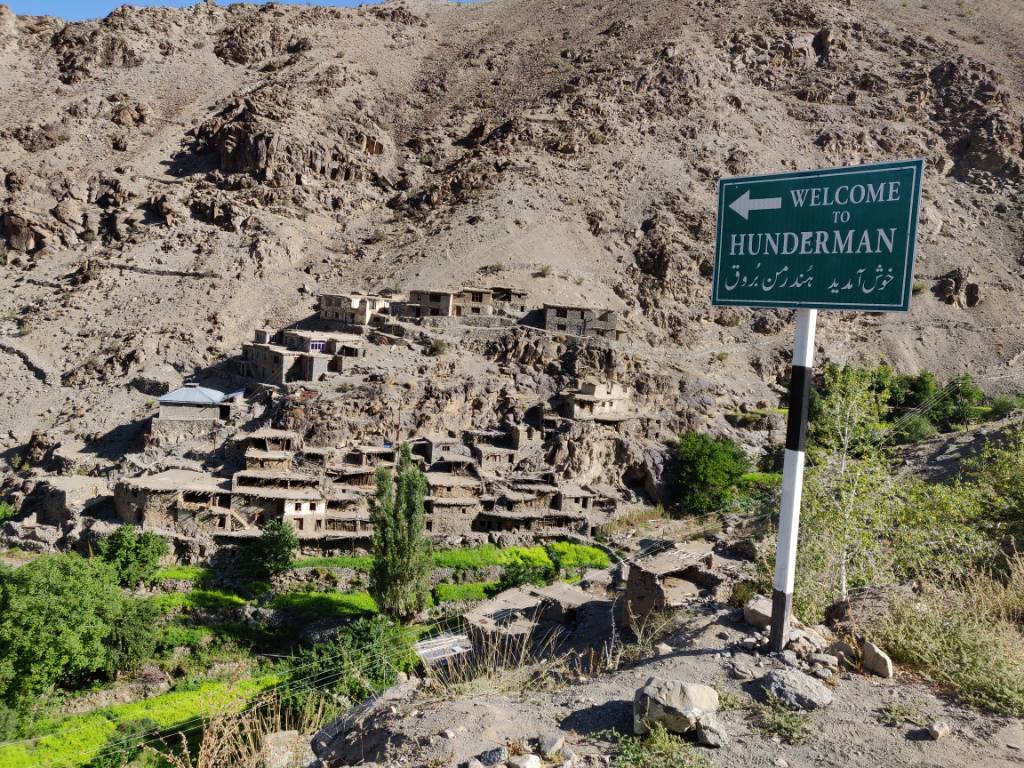
A Glimpse Across the Divide
Our journey took us to a small hillock with a viewpoint overlooking the border. Here, a binocular allowed us to peer into Pakistan, revealing a patchwork of green land and the flowing river. A guide, available for a small fee, pointed out landmarks across the border, including a lone soldier and a distant Masjid. Through the binoculars, the contrast between the ochre-colored mountains of India and the lush greenery of Pakistan was striking.
As we continued our exploration, we arrived at the signpost leading to Hunderman village. A cluster of mud houses came into view, presenting a ghostly appearance as if the village had been abandoned in the wake of disaster. The scene was both haunting and captivating, underscoring the village’s tumultuous history.
Exploring the Museum of Memories
The descent to the old Hunderman village revealed a gravelly trail leading to what appeared to be a ticket counter—possibly for the Hunderman Museum of Memories. This museum, if indeed it sells tickets or simply assists visitors, is likely a repository of the village’s rich and sorrowful past.
Hunderman stands as a poignant reminder of how borders can reshape lives and histories. For those willing to delve into its stories, the village offers a powerful reflection on the impact of geopolitical conflicts and the enduring spirit of its people.
Hunderman: The Haunting Echoes of a Forgotten Village
A Glimpse into History
Nestled in the valley, the abandoned ruins of Hunderman whisper tales from a bygone era. Once known as Hundermo Brok, this village was established centuries ago by its resilient inhabitants. The fate of Hunderman, however, changed drastically with the shifting boundaries that followed the Line of Control (LOC) between India and Pakistan.
By 1974, the villagers had to leave their ancestral homes and relocate to a new settlement higher up the valley. This new enclave, known as Upper Hunderman, became their refuge and a place where they slowly rebuilt their lives. Today, it is home to around 250 individuals, mostly survivors of the conflicts that once plagued their land.
The Ghost Village
Meanwhile, the original Hunderman village, now often referred to as Old Hunderman, fell into disuse and disrepair. The once lively homes and bustling lanes became silent, with remnants of the past scattered throughout. Over time, Old Hunderman earned the eerie moniker of a “Ghost Village,” a haunting reminder of the past.
Reviving the Past: Hunderman Museum of Memories
In 2015, a new chapter began for Hunderman with the creation of the Hunderman Museum of Memories. Thanks to the efforts of Ilyas Ansari, a local villager, and the Roots Collective—a local NGO dedicated to cultural preservation—the forgotten village found a new purpose. Ilyas converted his ancestral homes in Old Hunderman into a museum, with the mission of preserving the village’s rich history and cultural heritage.
The museum stands on the foundations of two of Ilyas’s family homes, displaying a range of intriguing artefacts. Visitors can explore items from the British Raj era, including old perfume bottles, biscuit tins, and shoe polish containers. War relics from the conflicts of 1971 and 1999, such as shrapnel and bullets, add to the museum’s poignant collection. Among the most compelling exhibits are the letters exchanged across the border, reflecting the deep sense of loss experienced by those separated by the redrawn lines. Notably, many of these letters were written by Ilyas’s maternal uncle, who was left behind in Pakistan during the 1971 conflict.
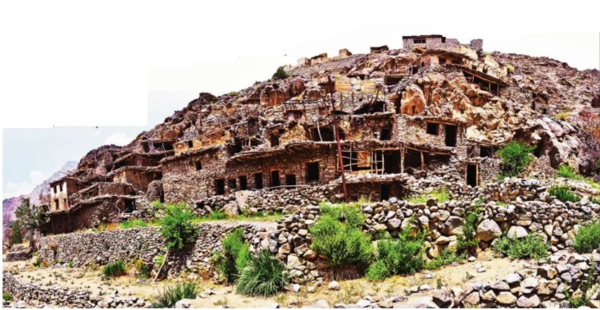
Discovering Hunderman: A Journey Through Time and Memory
The Origin of the Museum’s Name
In the quiet, enigmatic village of Hunderman, even the simplest of things tell a story. The village’s unique charm is captured in its museum’s name, Unlock Hunderman Museum of Memories. This name pays homage to the village’s distinctive locking system—a secret lever mechanism embedded between the wall and door of every house. Only the owner knew the exact method to unlock it. This symbolic mechanism of security and secrecy inspired the museum’s intriguing name, reflecting the hidden stories and memories the museum seeks to preserve.
Our exploration led us to a cave where, during the 1999 Kargil Conflict, nearly 40 villagers sought refuge. Standing there, I felt a profound sense of sorrow and reflection on the harsh realities of war. The cave, a silent witness to the struggle and endurance of its inhabitants, left me contemplating the senselessness of conflicts.
Journey to the Village’s Heart
Continuing our exploration, we reached the end of the village, which resembled an ancient amphitheater. The open space offered a poignant view into the village’s past and the resilience of its people. After absorbing the village’s atmosphere, we retraced our steps back to the main road, reflecting on the stories and memories left behind.

A Visit to Upper Hunderman
Though the day was drawing to a close, I was eager to visit Upper Hunderman, the new settlement where the village’s current residents live. We drove up to Upper Hunderman, arriving around noon when the streets were relatively quiet. The contrast between the old and new villages was striking, yet both hold their own unique charm and significance.
Reflections on the Journey
Visiting Hunderman was an emotional journey. The exploration of the old village and the museum evoked a mix of fascination and melancholy. While discovering the rich history and personal stories of Hunderman was rewarding, the impact of war on ordinary lives was a somber reminder of the broader consequences of conflict. A visit to Hunderman and its museum is sure to leave a lasting impression on anyone who ventures there, offering both a glimpse into a resilient past and a reflection on the human cost of war.
Hunderman Village: Practical Information
– How to Reach Hunderman Village: Hunderman is situated about 10 kilometers from Kargil town in the Union Territory of Ladakh. A car journey from Kargil will bring you to the village with ease. The nearest airport to Hunderman is in Leh, approximately 225 kilometers away.
– Where to Stay in Kargil: Kargil offers a range of accommodation options, including hotels, guest houses, and homestays. However, be aware that availability may be limited during the winter season, so plan accordingly to ensure a comfortable stay.
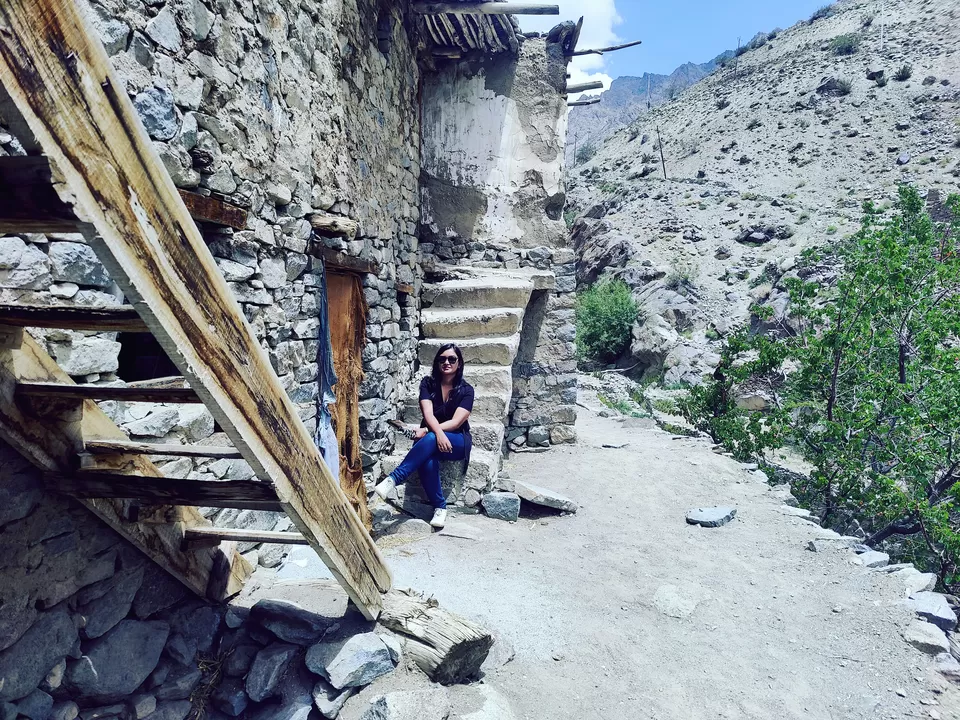
Discover Hunderman Village with LIFE on the PLANET LADAKH
Are you intrigued by the mystique of forgotten villages and the rich tapestry of history? LIFE on the PLANET LADAKH is excited to offer a unique opportunity to explore Hunderman Village, a place where history and memory intertwine.
Why Hunderman Village?
Hunderman Village, a gem tucked away in the rugged terrain of Ladakh, offers an unparalleled glimpse into a bygone era. This ghost village, with its hauntingly beautiful landscape and poignant history, is a testament to resilience and the passage of time. Here, you’ll uncover stories of wartime strife, cultural shifts, and the unyielding spirit of its inhabitants.
What to Expect
– A Journey Through Time: Walk through the abandoned streets of Old Hunderman and experience the echoes of the past. Discover the remnants of homes and artifacts that tell tales of a village caught in the crossfire of history.
– Unlocking Memories: Visit the *Unlock Hunderman Museum of Memories*, where you’ll find a curated collection of items that span from the British Raj era to recent conflicts. Marvel at the preserved letters and artifacts that narrate the personal stories of separation and survival.
– Stunning Landscapes: Enjoy the breathtaking views of the surrounding mountains and valleys, offering a serene contrast to the village’s haunting atmosphere.
– Cultural Insights: Gain an understanding of the local traditions and the impact of historical events on the community, making for an enriching and reflective journey.

Join Us
If you’re fascinated by historical exploration and cultural discovery, contact us to learn more about our upcoming trips to Hunderman Village. LIFE on the PLANET LADAKH is dedicated to providing immersive experiences that connect you with the heart of Ladakh’s heritage.
Reach out to us today and be part of this extraordinary journey into the past!

